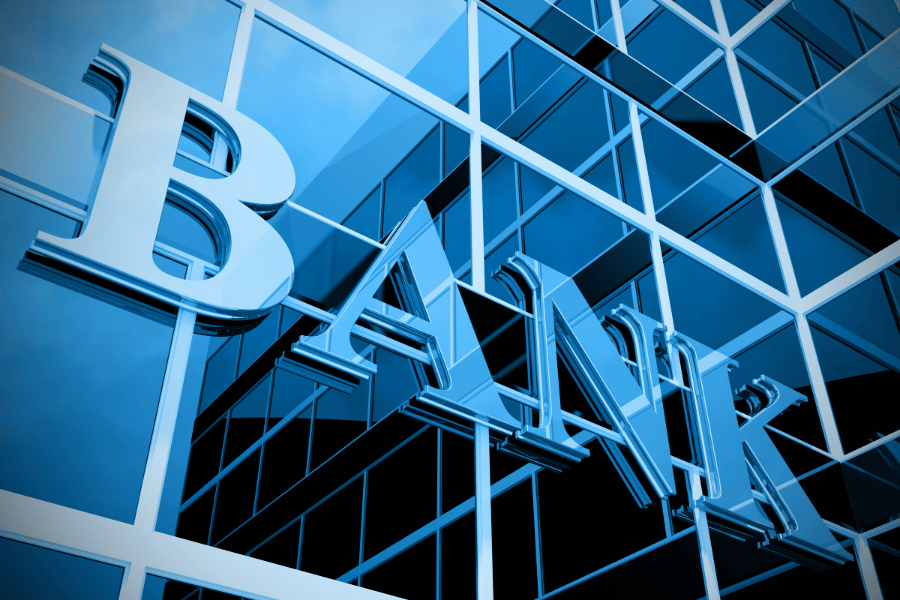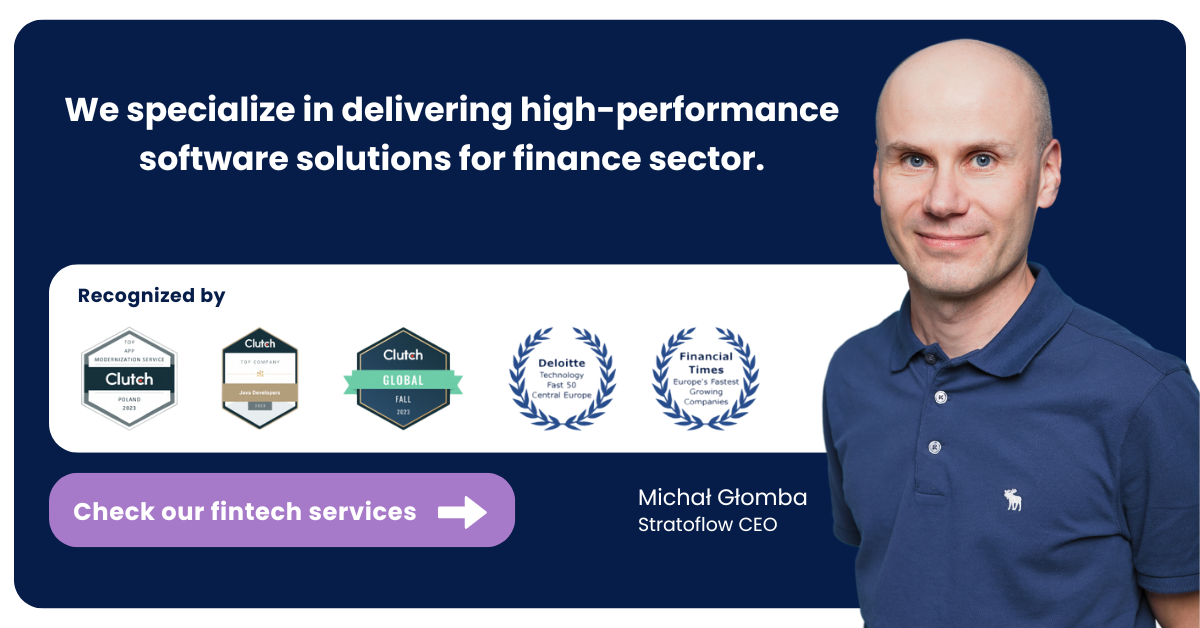
10 Recent Trends in Banking in 2024
Technology is advancing at a breakneck pace these days, and the banking sector is not being left behind. Banks worldwide are implementing innovative technology solutions that are changing how we use financial services. From traditional banking services to using mobile banking, payments, artificial intelligence, and blockchain-based solutions, the banking sector is adapting to customers and the market’s rapidly changing needs. So what trends in banking technology will dominate in 2024? Let’s find out!
The state of online banking technology
Globally, the mobile banking industry is overgrowing, driven by significant digital banking trends within the fintech sector. The rise of mobile banking app usage from 2015 to 2019 has been remarkable, with a high percentage of consumers now preferring this method to manage their bank accounts. More and more people are adopting online banking services as a result of technological advancements, digital transformation, and the growing use of smartphones in recent years.
Factors affecting the banking sector
This is undoubtedly influenced by the growing adoption of ecommerce and mobile payments and the rapid growth of contactless payments due to the COVID-19 pandemic. The Federal Reserve’s oversight and interest rate decisions significantly impact the banking sector, shaping market dynamics.
In addition, the development of fintech startups and the integration of blockchain technology into payment systems have contributed to the expansion of the electronic banking industry. The rise in interest rates for money market accounts, driven by actions of the Federal Reserve, has also reshaped the financial landscape.
Thus, this sector is snowballing worldwide and is an increasingly important part of the financial system. What will the next few years bring?
Most important statistics in 2024
Value of transactions: According to statistics published by the Statista portal, it appears that the total value of transactions in the digital payments segment could reach as much as $9.46 trillion in 2023, and the full value of transactions could show an annual growth rate (CAGR 2023-2027) of 11.80%, resulting in a projected total of $14.78 trillion by 2027.
Technology spending: Some 65% of banks expect a small increase (1%-9%) in technology spending, and another 14% expect a significant increase (10% or more). Notably, the expectation for significant increases dropped after March 9, suggesting a more cautious approach following the banking sector upheaval.
Technology employment: While 46.3% of banks expect the number of technology employees to remain the same, another 45.1% anticipate a slight increase. However, bank failures have made respondents less optimistic about increasing tech staff.
Digital customer transactions: More than half of bank customers still do not transact through digital channels, with the current median at 34.5%. However, this is expected to grow to 44.5% in the next 12 months, with some banks, such as Bank of America, already seeing significant digital adoption. Additionally, the median bank account balance and the percentage of Americans without a bank account are critical factors influencing digital transaction trends.
Use of Fintech Vendors: Cost and regulatory compliance are the main reasons why banks are reluctant to expand their use of fintech services. Despite this, there’s strong demand for these services, and banks typically have relationships with multiple vendors. A notable trend is the elimination or reduction of overdraft fees by many banks in response to public and regulatory pressures.
Sources: S&P Survey, Statista.
New technological developments are redefining our approach to finance. The role of banking is changing with the emergence of new technologies. This, in turn, is also affecting how companies, financial institutions, or finance departments function daily. The concepts of AI transformation, blockchain, NFT, AR, and VR are becoming integral to conversations about the sector’s future. What’s next? What direction will the entire banking industry take? Here are 10 key trends in finance and e-banking for 2024.

Banking technology trends 2024
New technological developments are redefining our approach to finance. The role of banking is changing with the emergence of new technologies. This, in turn, is also affecting how companies, financial institutions, or finance departments function daily. The concepts of AI transformation, blockchain, NFT, AR, and VR are becoming integral to conversations about the sector’s future. What’s next? What direction will the entire banking industry take? Here are 10 key trends in finance and e-banking for 2024.
1. Hyper personalization in the banking industry
Consumers expect highly personalized digital interactions across all industries, including banking. They benefit from the right level of service that creates loyalty by recognizing past interactions and anticipating future needs. This level of personalization will increase sales and engagement, and ultimately revenue.
Banking-as-a-service, APIs, and FinTech partnerships can move users toward highly personalized banking and financial services. Indeed, today consumers, banks and FinTech are increasingly using application programming interfaces to exchange information.
“The formula for growth sounds simple. Customers want to be provided with personalized experiences, regardless of wherever they may be on their own digital journey. The challenge, however, remains in execution,” says Nilesh Vaidya, Global Industry Head, Retail Banking and Wealth Management, Capgemini’s Financial Services Strategic Business Unit.
Such activities and interactions are bound to become the dominant trend, and banking will be embedded in other elements of everyday reality. Quick online loans available not only at the bank, self-service payments for parking use, for example, or automatically created savings bank accounts are the future that awaits us. The banking industry will develop in the direction of personalizing, offering new customers, and accompanying us with many services in an almost invisible way.
2. Artificial intelligence in the entire banking industry
Another of the key banking technology trends we can expect to see in 2024 is the increased use of AI in banking. For example, AI-powered chatbots will become even more common, providing customers with 24/7 support and personalized recommendations.
Besides, artificial intelligence is increasingly applicable to banking, primarily due to its ability to process large amounts of data and make quick decisions.
The technology can also help banks improve fraud detection and reduce financial crime risk. For example, with machine learning, banking systems and apps can analyze real-time transaction data and automatically trigger alerts or block suspicious transactions if suspicious activity is detected.
Another example of an AI application is credit risk analysis. Thanks to AI-based systems, banks can quickly and accurately assess customers’ creditworthiness and determine the level of risk involved in their loans or extending credit.
AI can also help optimize business processes in banking. By automating processes, banks can save time and resources by reducing costs and increasing the efficiency of their operations.
AI is, thus, undoubtedly a banking technology trend. It can bring many benefits to both banks and customers. With AI, banks and other financial institutions can make more accurate decisions and provide better customer service.
[Read also: How to Build a Custom Accounting Software]

3. Open banking
Another one is closely related to the above two trends in the entire banking industry, namely open banking and open X.
In the not-too-distant future, we are facing an evolution of the financial market on a scale we had not previously anticipated. Open Banking is one part of this broad landscape. Open banking refers to sharing customer data between banks and other financial institutions, such as bank accounts, transactions made, choosing banking products, and other financial information with third-party providers.
Open interfaces (open APIs), in turn, are increasingly being made available to third parties – to offer more access and modern services to their users and consumers, banks are increasingly partnering with FinTechs, specialized technology companies.
This is because financial institutions need to start making advanced services available to customers, for example, real-time management of personal finances on a single platform for all accounts held by the customer across all banks. Additionally, fees at credit unions are often compared with those at large national banks, highlighting potential cost savings for consumers.
It is important to remember that customer satisfaction currently plays a crucial role in the e-banking market, and the rise in end-user expectations is a challenge for the financial and banking industry. Significantly, this trend will remain the same in future as it increases with the development of FinTech. Capgemini data shows that as many as 75% of customers appreciate and enjoy their experiences and interactions with FinTech organizations.
With customers today able to switch banking providers at the click of a mouse, banks should make greater use of data and AI to customize customer experiences, create stronger relationships and maximize customer value. Online banks offer significant advantages in terms of convenience and cost savings due to the lack of physical branches.

4. Payments 4.X as a digital banking trend
Over the past few years, the increasing level of widespread digitization has also caused user experiences and customer expectations to dictate the direction of cashless transactions. The answer to customer expectations and customer experience, and as we know, not only Data is king, but the Customer is the king too, is Payments 4.X.
This is currently one of the most critical trends in banking, which may contribute to changing the way financial transactions are carried out shortly. The concept involves an improved version of traditional payment methods, such as debit cards and bank transfers, using new technologies such as blockchain, AI, and automation.
With Payments 4.X, bank customers have access to more personalized financial services that are faster, more efficient, and more secure than legacy solutions.
In addition, with Payments 4.X, banks have the opportunity to increase their competitiveness in the market and adapt to the changing spending needs of their customers, helping to keep costs, improve the quality of service and increase customer loyalty.
According to Capgemini’s World Payments Report 2021, nearly 45% of customers already use mobile wallets regularly (more than 20 transactions per year) – last year, it was only 23%. It can be assumed that this trend will continue as demand is to grow, and the number of cashless settlements will increase to 200 billion transactions in 2025.
5. Low-code or no-code platforms
The fiercely competitive industry environment in the e-banking sector requires openness and access to modern methods to build digital solutions. The answer to the need for faster delivery of products and services in the FinTech sector and beyond are platforms using a low code or no code approach. The software development process using such platforms is much simpler, as they contain ready-made components to build a product, process, or service with minimal programming knowledge.
According to Gartner forecasts, by 2025, as many as 70% of new enterprise applications will use low-code solutions. This compares with a share of less than 25% in 2020. The trend is mature enough to support such processes as customer onboarding and offer a wide range of add-on products.
FinTechs, among others, are basing their competitive advantage on such solutions. At Stratoflow – as a FinTech development company, we also appreciate the potential of low-code platforms, so we have created a brand new tool called Openkoda. This open-source, low-code platform enables Java developers to build scalable, extensible, and secure enterprise and SaaS applications more efficiently.
Without a doubt, emerging technologies like low-code platforms are poised to play a significant role in banking technology for several reasons. First, banks must significantly accelerate the time to market for digital banking products and services. Second, there is a massive increase in the number of FinTechs or third parties that offer turnkey digital financial solutions that easily integrate with core banking systems. Third, there is an ever-increasing desire to strengthen the cooperation of businesses, including banking, with IT.
[Read also: Accounting Software for Small Business]

6. Security and legacy systems as a trend in banking in 2024
Security is and will be one of the key trends in banking in 2024 As more and more financial services move into the digital world, the risk of cyberattacks becomes greater. Therefore, banks must invest in better security to protect their assets and customers and prevent fraud.
An essential element of security is transaction authorization. In 2024, we expect further development of biometric technologies, such as facial recognition and iris scanning, to replace traditional passwords and PINs.
In addition, banks will use increasingly sophisticated analytical tools to detect suspicious activity and enhance anti-fraud efforts. They will also work to protect customer data privacy and comply with data protection regulations.
This should also be considered in the context of the aforementioned low-code platforms and software development for the finance sector. In addition, security and regulatory compliance should be a priority in the software development process.
In 2024, banks will also emphasize educating customers on how to use banking services safely. Awareness campaigns and training can be practical tools here to help customers understand how to protect their data and avoid fraud.

7. RegTech in banking
The banking and financial services sector is one of the most heavily regulated industries in the world. RegTech is expected to disrupt the regulatory landscape soon, providing advanced technology solutions to compliance issues. With the entry of alternative finance, blockchain, cloud, big data, AI, FinTech, and digital banking industry is attracting the attention of governments around the world.
The emergence of RegTech (Regulation Technology) is rapidly transforming the financial area as businesses strive to improve compliance and risk management practices. With banks’ increasing adoption of AI, blockchain, big data, and machine learning algorithms, the automation of compliance procedures and the enhancement of risk management capabilities have become key priorities.
These cutting-edge technologies offer deep insights into compliance issues and empower financial institutions to detect potential regulatory infractions and suspicious activity. However, while the benefits of these emerging technologies are evident, the complexity of the regulatory environment and the need for agile response mechanisms continue to pose significant challenges.
RegTech will undoubtedly become even more critical in the coming years as banks and other financial institutions seek to guarantee steady development amidst constantly evolving regulatory requirements. As such, incorporating sophisticated AI and machine learning algorithms into compliance and risk management strategies will be crucial for financial organizations to remain competitive and compliant in today’s dynamic business landscape. For example, many banks will use blockchain for identity verification, Know-Your-Customer (KYC) processes, and transaction monitoring. Besides, with the implementation of data protection regulations such as DORA, MiCA, RODO, and CCPA, banks will have to focus on data privacy and security increasingly.
[Read also: What are Financial Management Systems: Best Tools to Choose From]
8. Robotic Process Automation (RPA)
Robotic Process Automation, commonly referred to as RPA, uses software robots or “bots” to automate repetitive, rule-based tasks.
In the banking industry, RPA has become a critical tool for improving operational efficiency and customer experience. By deploying RPA, banks have been able to automate a variety of back-office functions, including data extraction, transaction processing, and compliance checks.
This automation not only minimizes human error, but also speeds up processes. The financial impact is also significant. Automating routine tasks results in significant operational cost savings, allowing human resources to focus on more value-added activities. In addition, the ripple effect of faster processing times and fewer errors is an improved customer experience.
A prime example is loan processing, which traditionally took several days but can now be completed in hours with Robotic Process Automation.
9. Blockchain
We’ve touched on blockchain technology, let’s now explore its role in the banking industry.
Blockchain, a decentralized ledger technology, provides a secure and transparent platform for transactions. Its integration into banking has the potential to be transformative. One of blockchain’s standout features is its security. Because of its decentralized nature, transactions are secure and resistant to tampering. This is crucial for international transactions with high stakes. The lack of intermediaries in blockchain transactions results in significantly reduced transaction fees, making cross-border transactions faster and cheaper.
Another innovative application of blockchain in banking is the use of smart contracts. Smart contracts, which are self-executing agreements with terms coded directly into them. By automating and streamlining complex procedures, smart contracts guarantee that all agreed-upon conditions are fulfilled prior to the accomplishment of a transaction.
10. Internet of Things (IoT)
The Internet of Things (IoT) signifies a network of physical devices connected through the internet. In the banking industry, the IoT offers an opportunity for a more customized and efficient service delivery.
Devices like smartwatches and smartphones, when integrated with IoT, allow banks to provide clients with tailored notifications, offers, and services based on their individual location and preferences.
Additionally, the ATM and branch locator feature is another useful application. By utilizing IoT, customers can easily locate nearby ATMs or bank branches, enhancing their overall user experience.
What is more, IoT devices transmit real-time data, allowing banks to precisely analyze the data stream and quickly detect any anomalies or suspicious activities associated with a customer’s account. Prompt action can then be taken to strengthen the security of the account.

Will 2024 prove to be a breakthrough year for banking technology?
Banking technology landscape is a rapidly developing field that offers many opportunities for the financial sector. In 2024, we can expect trends to continue to evolve, such as the growing importance of artificial intelligence, the increasing use of low-code platforms, the emphasis on personalization, the adaptation of payments 4.X, open banking, or the increased focus on security and the growing popularity of FinTech. The rise of digital banks, with their competitive features like seamless mobile banking and quick account opening processes, is also a significant trend.
Banks need to be ready for change and take advantage of the opportunities that technology provides to meet the demands of customers and competition in the market. The decline in traditional bank usage, with more people opting for digital banks, highlights demographic differences in preferences for using bank tellers. Furthermore, implementing innovative solutions can increase bank operations’ efficiency and improve customer service quality. Therefore, nothing is left to do but wait for developments and monitor what technological innovations will emerge in the digital banking area in the coming years.
Related Posts
We are Stratoflow, a finance software development company. We firmly believe that software craftsmanship, collaboration and effective communication is key in delivering complex software projects. This allows us to build advanced high-performance Java applications capable of processing vast amounts of data in a short time. We also provide our clients with an option to outsource and hire Java developers to extend their teams with experienced professionals. As a result, our Java software development services contribute to our clients’ business growth. We specialize in fintech software, travel software, and ecommerce software development.

